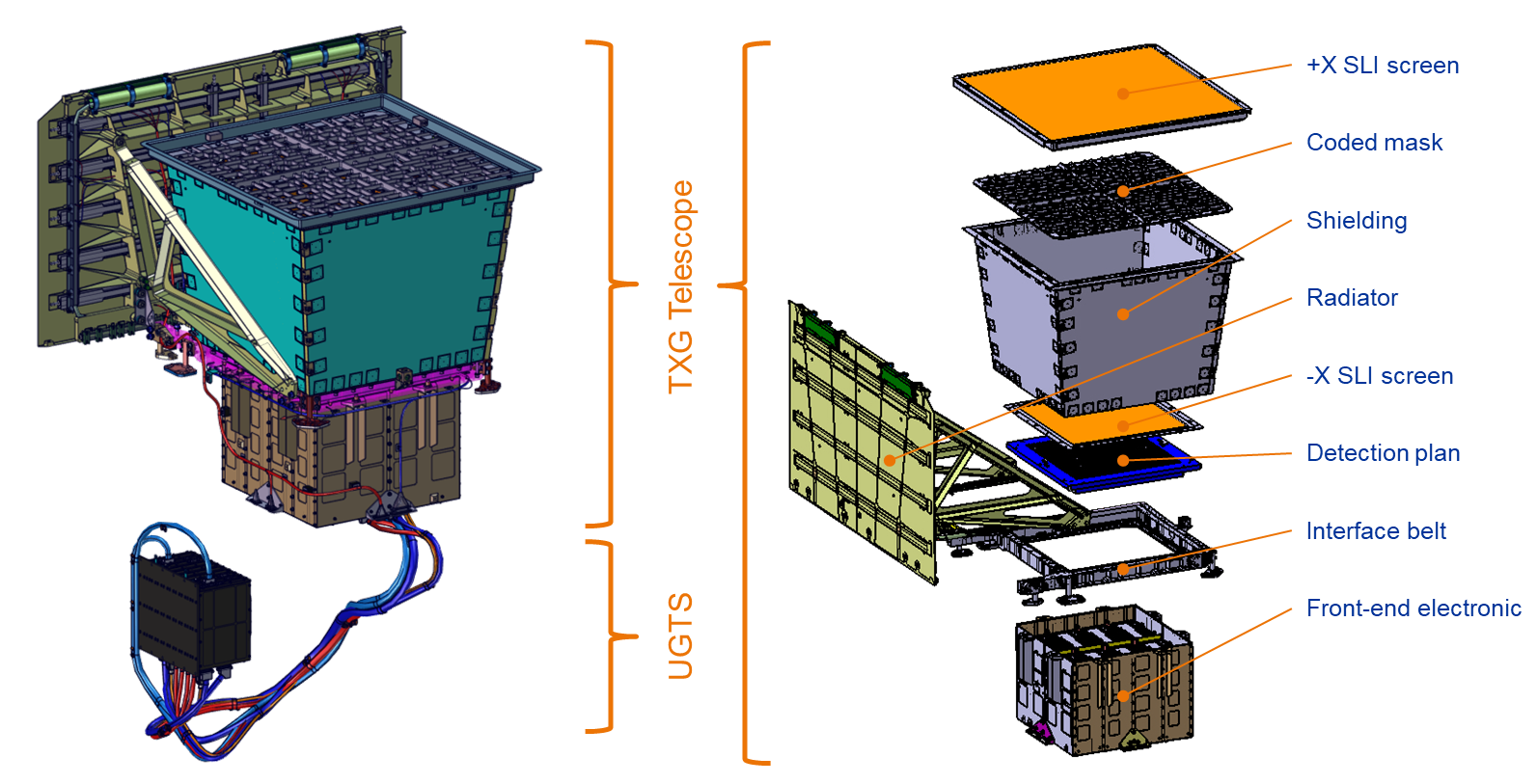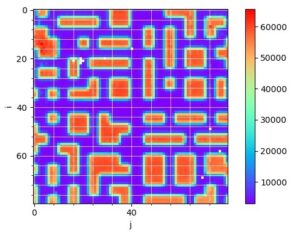The ECLAIRs telescope plays a key role onboard SVOM by autonomously detecting Gamma-ray bursts (GRBs) in near real time in the X-/Gamma-ray energy range, and then by quickly providing their position in the sky.
The ECLAIRs consortium is made up of several French labs: IRAP, IRFU and APC. The ECLAIRs telescope is under the CNES supervision.

The ECLAIRs instrument is made up of:
- an X-/Gamma-ray wide-field (89°x89°) coded-mask camera working in the 4 – 250 keV energy range. Each photon passing through the holes in the mask can interact with one (or more) of the 6400 CdTe detectors paving the detection plane. The detectors are operated at a temperature of -20°C.
- a data processing unit called UGTS in charge of operating the telescope, managing the data flow acquisition and searching in near real time for the appearance of new GRBs within the ECLAIRs field-of-view (FoV).
The ECLAIRs wide (2 sr) FoV provides large coverage of the sky. At the top of the instrument there is a coded mask that consists of opaque and transparent elements arranged in a quasi-random pattern. The mask pattern was designed using a mathematical algorithm. The GRB photons can only pass through the transparent elements (i.e. holes). These photons then interact with the pixels of the detectors. The resulting image called a shadowgram encloses a partial shadow of the mask. By using deconvolution techniques, it is possible to retrieve the GRB position. The UGTS builds for each detected event a ”photon frame message” including the arrival time, the position on the detector and the energy of the event.

Once ECLAIRs triggers on an unknown source (e.g. a GRB), an alert is triggered and immediately sends it to the platform and the ground via the VHF antenna network. If the source is observable by the satellite, the platform will quickly slew to repoint the narrow-field instruments MXT and VT towards the ECLAIRs position in order to search for an X-ray and optical counterpart, respectively.
GRBs are expected to be detected by ECLAIRs with a localisation accuracy better than 10 arcminutes (though as good as 3 arcminutes for very bright GRBs). The ECLAIRs GRB detection rate is expected to be around 70 GRBs per year.





